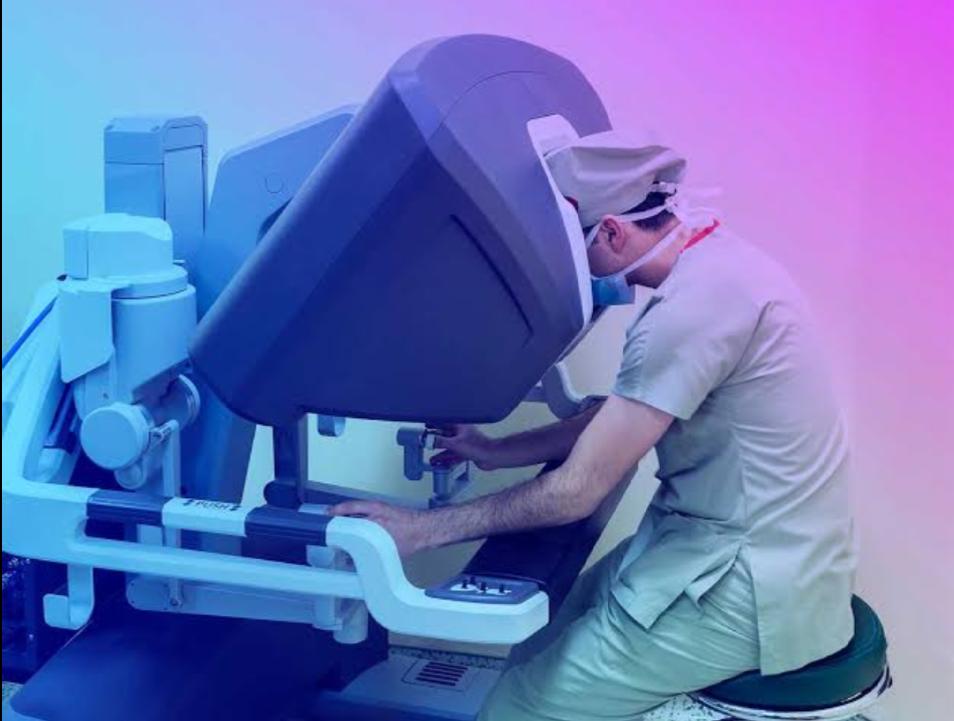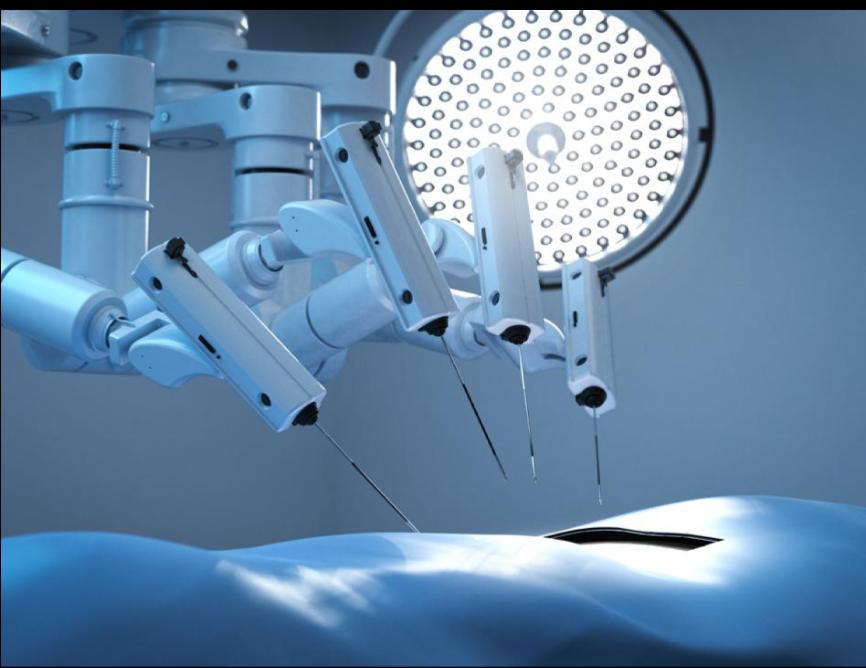Synopsis:
Consultant uro-oncologist and robotic surgeon Abhay Kumar of Medica Superspecialty Hospital (MSH) said this robot-assisted surgery allowed a surgeon to go deeper inside the body because of refinement in optics, vision and the camera.
Minimally invasive, more precise, less painful robotic surgeries that ensure faster recovery are increasingly being used by doctors and gaining wider acceptability among patients. Till about a year ago, only two hospitals in Bengal— Tata Medical Centre and Apollo Hospitals—had the facility. Now, Narayana Superspeciality Hospital Howrah is equipped with a fourth-generation robot, Da Vinci surgical system
In the three decades since robots first entered the operating room, these increasingly sophisticated machines have helped surgeons perform more than a million procedures, all over the human body: Bypassing a clogged artery. Removing a gall bladder. Replacing a hip. Removing liver tumors. And more.

Robotic surgery with the da Vinci System, on the other hand, bestows very high definition and magnified 3-dimensional vision with the camera controlled by the surgeon. The instruments with extreme degrees of freedom (Endo-wristed), enable the surgeon to use instruments in narrow confined spaces, to access difficult to reach cancers, and at angles that are impossible with open or laparoscopic instruments. Motion scaling which allows the surgeon to reduce the degree of instrument movement as a proportion of movement of the surgeon fingers, enables a greater degree of precision. All these provide the ultimate flexibility and precision for exceptional surgical techniques in cancer surgery.
In cancer surgery, robotic techniques enable a radical operation to be performed with preservation of nerves and other critical structures, due to better visualisation. This is particularly important in rectal, gynaecologic and prostate cancer surgeries. For example, in robotic prostate cancer surgery, every effort is made to spare the nerves. As the nerves and vessels are all magnified and it is much easier to save them and help retain potency.
Robotic Surgery: What to expect?
While each surgery is different, here are the general steps to a Robotic-assisted surgery:
- The surgeon makes tiny (one to two centimetre-long) incisions in the body.
- The surgeon inserts a miniature robotic instrument and a powerful camera into the body.
- The surgeon then sits at a nearby console (a large computer) to direct the procedure. At the console, the area of operation can be seen highly magnified, with excellent resolution.
- Sitting at the console, the surgeon manipulates the controls.
- The instruments respond to these movements and translate them into precise, real-time movements inside your body.
- The robotic devices, which have greater dexterity and range of motion than a human, allow the surgeon to successfully perform delicate surgeries in hard-to-reach places.
Rise Of The Robots
“We are now at a pivotal point in the field,” Fong recently wrote, “when a technology is about to transform from a tool for innovators and experts to a tool for general practitioners.”
Robotic technology builds upon the considerable benefits of minimally invasive, manually performed laparoscopic surgery. Laparoscopy makes tiny incisions, which means less trauma, less blood loss, fewer or even no sutures (often a Band-Aid will do), much less pain and faster recoveries.
With newer robots, surgeons are able to work side-by-side.

Robo- Surgery New Pipe Dream for Cancer Patients
The latest robotic machines add an astounding level of precision. 3D video screens enable surgeons to see more (even around corners), while ultra-miniature instruments are guided to remove the smallest, most awkwardly located tumors no human hand could ever reach.
As a result, more patients than ever can be “cured,” even while they spend less time than ever in the hospital.
Robotic surgery for cancer treatment
Robotic Surgery has become a new standard of treatment for many cancers including Urological, gynaecological, colorectal and trans oral surgeries. These particular organ-based surgeries have also got FDA approvals. After its successful recognition in the above mentioned areas, the robotic surgery is now being appreciated in Upper GI and thoracic as well.

Minimally invasive approach in oncological surgery is usually inspired by its improving perioperative outcomes, functional results, minimal complications, and uncompromised oncological principles. A survey of members of the Society of Gynecologic Oncologists found that 97% of respondents reported using the robot in 2012, compared with only 29% in 2007.
There was a significant increase in the perceived appropriateness of robotic surgery for a radical hysterectomy and lymph node dissection for the management of cervical cancer over time, from 60.2% in 2007 to 89.1% in 2012. The robot was favoured over traditional laparoscopy for cervical cancer in 75% of respondents by 2012.
Commonly performed Robotic Surgeries:
- Radical prostatectomy
- Robotic radical nephrectomy
- Colorectal Surgery (Total Mesorectal excision, TME)
- Trans oral robotic surgery (TORS)
- Radical Hysterectomy and other gynaecological procedures
New Players In The Market
The platform is expensive. A robotic machine can cost upward of $2 million, and robotics can add thousands of dollars to the cost of an operation. Competition is expected to bring costs down. New players are entering the market, challenging the dominance of Intuitive, the company behind the da Vinci system used at City of Hope and nearly everywhere else.

Those new players will also speed innovation.
One recently approved technology makes no external incisions at all. Designed by Auris, the Monarch system threads a flexible catheter down a patient’s airway to perform lung biopsies and, eventually, to remove diseased tissue. The same system may soon be able to perform urinary tract procedures.
Another competitor, Johnson & Johnson, has partnered with Alphabet – parent company of Google – to marry robotics and artificial intelligence, with an eye toward automating many surgical procedures. This may be the most exciting development of all.
“I believe that surgical automation is a road to offering perfect operations, consistency of procedures and ultimately optimal outcome for our cancer patients,” said Woo – and she’s far from alone.
“If we can automate parts of the operation,” suggested Jae Kim, M.D., chief of Thoracic Surgery, “so I can focus more on the parts of the operation that can’t be automated, it would be a win for the patient.”
Potential benefits of robotic surgery for patients include
- Reduced pain
- Lower risk of infection or complications
- Less blood loss (fewer transfusions)
- Shorter hospital stays
- Better cosmosis
- Faster return to normal activities (e.g., sexual function, urinary continence)
- Improved quality of life
Limitations of robotic surgery
- Expensive – The high cost of installing a robotic surgery system can increase the cost of a surgical procedure. Surgical robots are costly to maintain, and their operation requires additional training, which is also expensive
- Requires expertise
- Mechanical failure – a chance of breakdown

